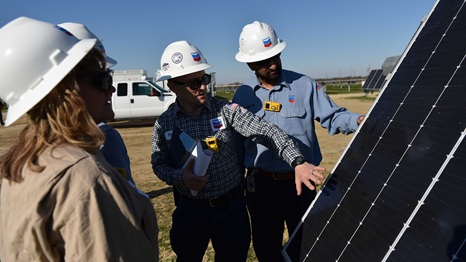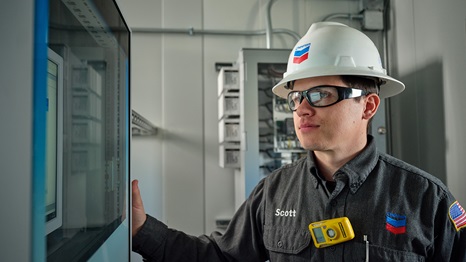emissions solutions
explainer: what do we mean by hard-to-abate industries?
3 min read | may 03, 2024
Industries that have a difficult time lowering their carbon intensity have options including carbon storage and alternative fuels.
What do steel, cement and chemical production all have in common?
They’re sectors that are trying to meet increasing demand while lowering their greenhouse gas emissions. And it’s not easy.
Take a look:
- Demand for chemical products, such as plastics, is growing, and the demand for primary chemicals has increased significantly. The chemical sector is the third-largest industrial emitter of direct carbon dioxide (CO2) emissions.
- Demand for cement is expected to grow by 2.4% a year until 2026. According to the IEA (International Energy Agency), direct CO2 emissions from cement have been mostly flat in recent years, but declines of about 3% annually through 2030 would be needed to meet emissions reduction targets under the IEA Net Zero Emissions by 2050 Scenario.
- The demand for steel is projected to rise 30% by 2050. Total CO2 emissions from the iron and steel sector have risen over the past decade, in large part because of increased demand.
These industries—steel, power, chemical, cement and refining to name a few—are considered hard to abate, meaning it’s difficult to lower their greenhouse gas emissions.
This also means they will need creative solutions in order to decrease their carbon intensity.
what we’re talking about
The production processes for hard-to-abate industries such as steel and cement are energy intensive, release carbon as a byproduct or both. The challenge for these industries, which are essential to modern life, is to produce more while emitting less.
So what can they do to lower their carbon emissions?
consider this
Several factors can go into deciding how emissions should be abated, including whether to reduce them during production, to deal with them after they are produced or both.
One potential solution for addressing the carbon that is being emitted is carbon capture, utilization, and storage (CCUS). Considerations for choosing any abatement option include:
- How to capture, transport and store the emissions if a company is looking to CCUS.
- Which alternative fuel sources, such as hydrogen, can give similar results to what they’re already using.
- What policies there are at the local, state and federal levels that might enable or restrict the chosen emission reduction effort.
- The timing to set up emission reduction equipment or technology vs. how long a facility is expected to operate.
- The cost of investing in abatement technologies and equipment.
what we’re doing
Although some industries may have difficulty decreasing or eliminating their greenhouse gas emissions, there are still options to lower their carbon intensity. Adam Miller, commercial advisor for Chevron New Energies business development, helps Chevron’s carbon storage business identify potential customers and projects to collaborate with.
adam miller
commercial advisor
Chevron is working to scale up its own carbon reduction efforts and share its learnings with others. This includes our work with CCUS, lower carbon fuels and technologies that help lower carbon intensity.
more on that
Markets for technologies and techniques that lower the carbon intensity of hard-to-abate industries are still developing. The solution to lowering their carbon emissions is not always evident or swift, noted KC Littlefield, general manager for technology commercialization with Chevron CCUS. But Chevron is taking a long-term approach.
kc littlefield
general manager
technology commercialization
CCUS
topics covered
related content
-

 laying the foundation to realize carbon capture’s potential
laying the foundation to realize carbon capture’s potentialemissions solutionsmarch 27, 2024
-

 hydrogen facility to be a chevron first
hydrogen facility to be a chevron firstour operationsfebruary 29, 2024
-

 supply chains are part of the evolution in energy
supply chains are part of the evolution in energyemissions solutionsjanuary 11, 2024
-

 going where few drones have gone before
going where few drones have gone beforeemissions solutionsnovember 10, 2022
chevron email updates
Subscribe to our newsletter to receive news and updates.



